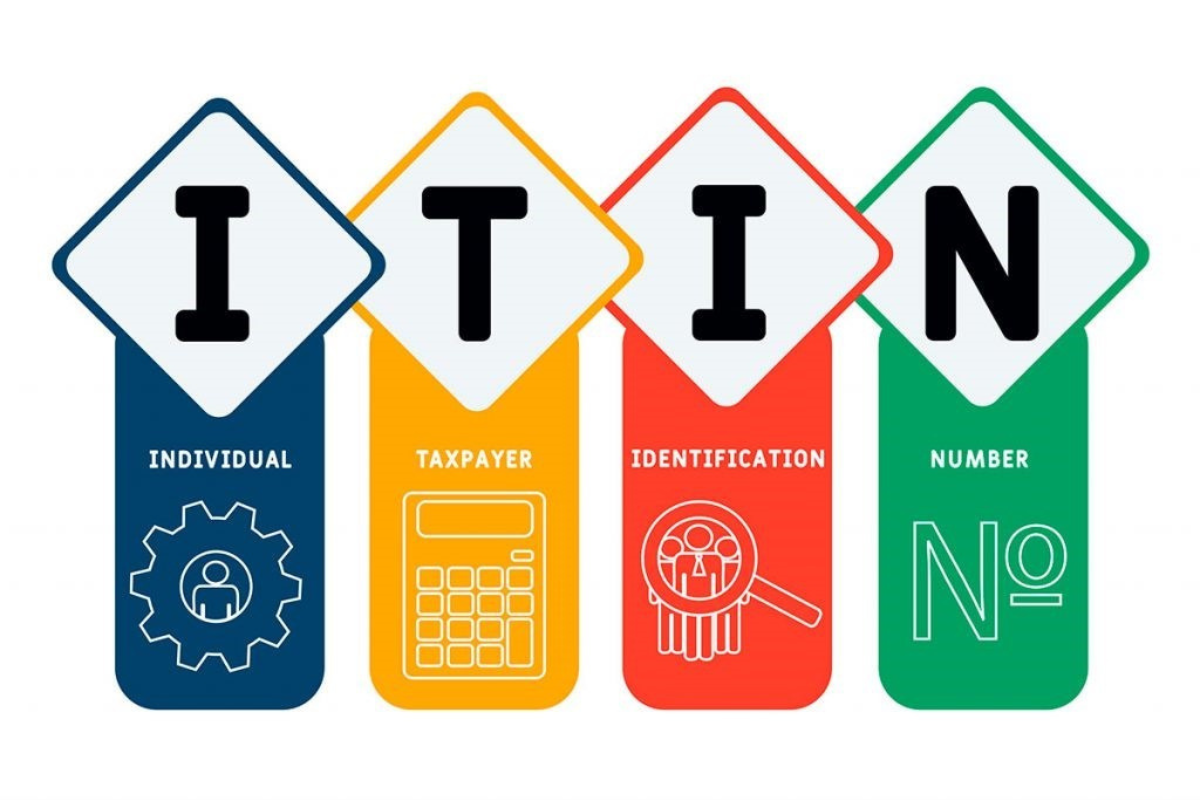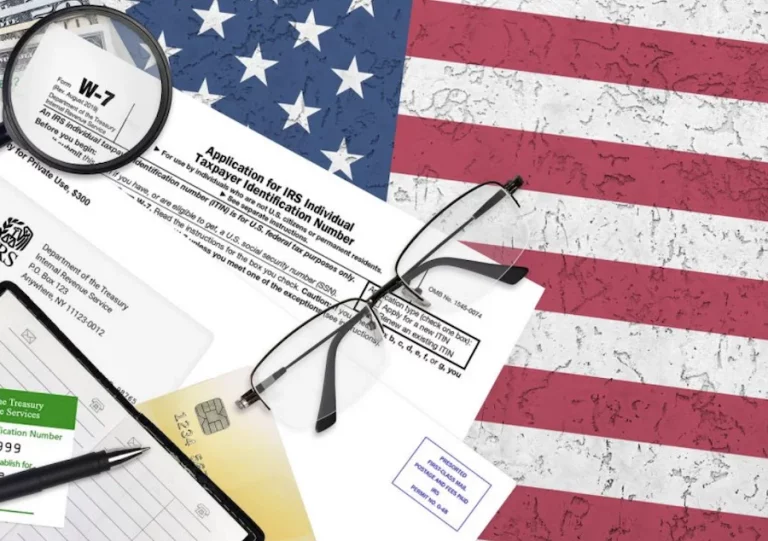How to Apply for an ITIN Number
Applying for an ITIN number (Individual Taxpayer Identification Number) can seem like a daunting task, especially if you’re unfamiliar with the U.S. tax system. However, it’s an essential step for many individuals who are not eligible for a Social Security Number (SSN) but still need to meet their tax obligations or access financial services in the United States.
In this comprehensive guide, we will walk you through the process of applying for an ITIN number, explaining each step in detail. Whether you need an ITIN to file your taxes, open a bank account, or secure a mortgage, this guide will provide you with all the information you need. We’ll cover everything from eligibility requirements to the necessary documents, common pitfalls to avoid, and the benefits of having an ITIN.
By the end of this article, you’ll have a clear understanding of how to apply for an ITIN number and why it’s an important tool for non-U.S. citizens and residents.
Table of Contents

What is the Purpose of an ITIN Number?
An Individual Taxpayer Identification Number (ITIN) is a tax processing number issued by the Internal Revenue Service (IRS) to individuals who are not eligible to obtain a Social Security Number (SSN). The primary purpose of the ITIN is to facilitate tax reporting for non-resident aliens, resident aliens, their spouses, and dependents who do not have and are not eligible to obtain an SSN.
Who Needs an ITIN?
Understanding who needs an ITIN is crucial for ensuring compliance with U.S. tax laws. Here are the key groups of individuals who typically require an ITIN:
- Non-Resident Aliens: Individuals who are required to file a U.S. tax return but do not qualify for an SSN. This includes foreign nationals who earn income from U.S. sources, such as rental income, royalties, or wages from a U.S.-based company.
- Resident Aliens: Individuals who are in the U.S. on a temporary visa or those who have not yet obtained a Social Security Number but are required to file a U.S. tax return.
- Spouses and Dependents of U.S. Citizens or Resident Aliens: If a U.S. citizen or resident alien is filing a joint tax return and their spouse or dependents do not qualify for an SSN, they will need to apply for an ITIN.
- Individuals Filing U.S. Tax Returns: This includes anyone who has a tax filing obligation in the U.S. but is not eligible for an SSN, such as certain foreign investors or students.
Common Uses of an ITIN Number
The ITIN serves various purposes, primarily related to tax reporting and financial activities in the U.S. Some of the most common uses of an ITIN include:
- Filing U.S. Taxes: The ITIN is most commonly used for filing federal income tax returns by individuals who do not have an SSN. The IRS requires all individuals with a tax obligation in the U.S. to have a unique identification number, which is why the ITIN was created.
- Opening Bank Accounts: Many U.S. financial institutions accept an ITIN as a form of identification for non-residents who wish to open bank accounts. This can be especially important for individuals who need to manage finances in the U.S. but are not eligible for an SSN.
- Applying for Loans or Mortgages: Some lenders allow individuals with an ITIN to apply for loans or mortgages. Although the availability of such financial products may be limited compared to those for SSN holders, an ITIN can still open doors to important financial opportunities.
- Building Credit History: While not as common, some credit reporting agencies recognize ITINs for establishing and building credit in the U.S. This can be beneficial for individuals who plan to reside in the U.S. long-term and want to establish a credit history.
Table: Differences Between ITIN, SSN, and EIN
| Feature | ITIN | SSN | EIN |
|---|---|---|---|
| Issued By | IRS | Social Security Administration | IRS |
| Purpose | Tax reporting for non-eligible SSN individuals | Tax identification for U.S. citizens/residents | Tax identification for businesses |
| Eligibility | Non-resident and resident aliens, dependents | U.S. citizens, permanent residents | Businesses, including sole proprietors |
| Used For | Filing taxes, opening bank accounts | Employment, social benefits, tax reporting | Filing business taxes, opening business accounts |
| Expiration | Renewable, may expire if not used for 3 years | Permanent, does not expire | Permanent, does not expire |

Eligibility Requirements for an ITIN Number
Before you begin the application process for an ITIN number, it’s essential to understand the eligibility criteria. Not everyone needs or qualifies for an ITIN, so identifying if you meet the requirements is the first step. This section will guide you through who can and cannot apply for an ITIN.
Who Can Apply for an ITIN?
The ITIN is specifically designed for individuals who are not eligible for a Social Security Number (SSN) but have a tax reporting obligation in the United States. Here are the primary groups of individuals who can apply for an ITIN:
- Non-Resident Aliens: Individuals who are required to file a U.S. tax return, such as those receiving income from U.S. sources (e.g., rental income, investment income, or wages from a U.S.-based company) but who do not qualify for an SSN.
- Resident Aliens: Individuals living in the U.S. who, due to their visa status or other reasons, are not eligible for an SSN but still need to file a U.S. tax return.
- Dependents and Spouses: If you are the dependent or spouse of a U.S. citizen, resident alien, or non-resident alien visa holder, and you do not qualify for an SSN, you can apply for an ITIN. This is particularly relevant when the primary taxpayer is filing a joint tax return.
- Foreign Students and Scholars: Students, professors, or researchers who are in the U.S. under a temporary visa (such as an F-1, J-1, or M-1 visa) and who need to file a U.S. tax return or are recipients of taxable scholarships can apply for an ITIN.
- Foreign Investors: Non-resident aliens who are involved in U.S. real estate transactions or who receive dividends from U.S. companies may need an ITIN to file the required tax forms.
Example Case Study:
Juan, a Spanish citizen, receives rental income from a property he owns in Florida. Although Juan does not live in the U.S., he is required to report his rental income to the IRS. Since he is not eligible for an SSN, Juan applies for an ITIN, allowing him to meet his tax obligations and file his U.S. tax returns.
Who Cannot Apply for an ITIN?
While the ITIN serves a broad purpose, certain individuals are not eligible to apply. Understanding these exclusions helps avoid unnecessary applications and potential rejections:
- U.S. Citizens and Permanent Residents: Individuals who are eligible for or already have an SSN cannot apply for an ITIN. The SSN serves as the primary tax identification number for U.S. citizens and permanent residents.
- Individuals Without a Tax Filing Requirement: If you do not have a U.S. tax filing requirement and do not qualify under any of the specific use cases (such as opening a U.S. bank account), you are not eligible for an ITIN.
- Visitors and Tourists: Those who are in the U.S. on a tourist visa (B-1/B-2) and have no income to report or tax obligations are not eligible for an ITIN. The ITIN is not intended for general identification purposes.
- Expired ITIN Holders Not Filing a Tax Return: If your ITIN has expired and you do not need to file a tax return, you are not required to renew it. However, if you need to file taxes in the future, you will need to renew your ITIN at that time.
Quote:
“The ITIN is not just a tax number; it’s a gateway to fulfilling financial and legal obligations in the United States for those who don’t qualify for an SSN.” — IRS Spokesperson

Steps to Apply for an ITIN Number
Applying for an ITIN number involves a series of steps that require careful attention to detail to ensure your application is processed smoothly. In this section, we’ll guide you through each step of the process, from gathering the necessary documents to submitting your application and tracking its status.
1. Gather Required Documents
Before you begin the application process, it’s important to gather all the necessary documents. The IRS requires specific identification and tax-related documents to verify your identity and your eligibility for an ITIN.
- Completed Form W-7: The application for an ITIN starts with filling out Form W-7, which is the IRS form specifically designed for this purpose. Make sure to fill out the form accurately, providing all required information.
- Valid Identification Documents: You must provide original documents or certified copies from the issuing agency. The most common documents accepted include:
- Passport: A passport is the only document that proves both your foreign status and identity, and no other documents are needed if you provide this.
- National Identification Card: Must include your photo, name, current address, date of birth, and expiration date.
- U.S. Visa: If you are on a visa, you need to provide a copy of your visa issued by the U.S. Department of State.
- Federal Tax Return: You typically need to attach your federal income tax return to your Form W-7 unless you qualify for an exception (such as opening a bank account or securing a mortgage). This ensures that the ITIN is being requested for legitimate tax purposes.
- Supporting Documentation: Depending on your reason for applying, you might need additional documents. For instance, if you are applying as a dependent, you may need to provide a birth certificate or medical records.
List of Commonly Accepted Identification Documents:
- Passport (stand-alone document)
- National identification card
- U.S. visa
- Foreign military identification card
- Civil birth certificate (for dependents only)
- School records (dependents under age 18)
2. Fill Out Form W-7
Filling out Form W-7 correctly is crucial for a successful application. The form requires detailed information, so it’s important to take your time and ensure accuracy.
- Personal Information: Provide your full name, foreign address, and U.S. mailing address. Be sure to include your date of birth and country of birth.
- Reason for Applying: On the form, you will need to indicate your reason for applying. Choose the option that best describes your situation, whether it’s filing a tax return, being a dependent or spouse of a U.S. citizen/resident alien, or being a non-resident alien required to obtain an ITIN to claim a tax treaty benefit.
- Tax Return Information: If you are submitting a tax return with your ITIN application, ensure all information on Form W-7 matches your tax return.
Example: If you are a non-resident alien filing a U.S. tax return to report rental income, you would select box “a” under the “Reason you are submitting Form W-7” section.
3. Submit Your Application
Once you have completed Form W-7 and gathered your identification documents, it’s time to submit your application. There are several methods to submit your ITIN application:
- By Mail: You can mail your Form W-7, tax return, and original or certified copies of your identification documents to the IRS. The address is listed on the Form W-7 instructions. It is advisable to send your application via certified mail for tracking purposes.
- In Person: You can apply in person at a designated IRS Taxpayer Assistance Center (TAC). These centers are equipped to help with ITIN applications, and you can submit your documents directly without needing to mail them.
- Through an Acceptance Agent: The IRS has authorized certain agents (known as Certifying Acceptance Agents) who can verify your documents and submit the application on your behalf. This method is often more convenient, especially if you are concerned about mailing your original documents.
4. Wait for Your ITIN to be Processed
After submitting your application, the IRS typically takes 6 to 8 weeks to process your ITIN application. During peak tax season, this period might extend. Here’s what to expect during this time:
- Processing Time: While waiting, you can check the status of your application by contacting the IRS. Be prepared to provide your full name and the date of your application.
- Acceptance or Rejection: Once processed, you will receive a notice from the IRS either assigning you an ITIN or explaining why your application was rejected. If rejected, the notice will include the steps you can take to correct the issues.
- Use Your ITIN: After receiving your ITIN, you can use it to file your taxes, open bank accounts, or for any other financial purposes as required.
Table: Methods of Submitting ITIN Application
| Method | Details | Pros | Cons |
|---|---|---|---|
| Send Form W-7 and documents to IRS by mail | Simple and cost-effective | Risk of lost documents | |
| In-Person (TAC) | Submit documents directly at an IRS Taxpayer Assistance Center | Immediate submission, no mailing delay | Limited availability, may require an appointment |
| Through Acceptance Agent | Authorized agent verifies documents and submits application for you | Professional assistance, no mailing required | May incur additional fees |
5. Receiving and Using Your ITIN
Once you receive your ITIN, it’s important to understand how to use it effectively:
- File Tax Returns: Use your ITIN on your U.S. federal tax returns and ensure it is listed on any accompanying forms.
- Renewal Requirements: Your ITIN may expire if not used on a federal tax return for three consecutive years. If it expires, you will need to renew it before filing your tax return.
- Protect Your ITIN: Just like a Social Security Number, your ITIN is a sensitive piece of personal information. Ensure you protect it from theft or unauthorized use.

Common Mistakes to Avoid When Applying for an ITIN
Applying for an ITIN can be a straightforward process if you follow the steps carefully. However, several common mistakes can delay your application or result in rejection. This section highlights these pitfalls and provides guidance on how to avoid them.
1. Incomplete or Incorrect Form W-7
One of the most common mistakes applicants make is submitting an incomplete or incorrectly filled-out Form W-7. This can lead to delays in processing or outright rejection of your application.
- Missing Information: Ensure that all fields on Form W-7 are filled out completely. Commonly missed sections include the reason for applying and the date of birth.
- Incorrect Information: Double-check all the information you provide. Any discrepancies between your identification documents and the form can cause issues. For example, ensure your name and date of birth match exactly as they appear on your passport or other official documents.
- Signature and Date: Don’t forget to sign and date the form. An unsigned form is considered incomplete and will be returned.
2. Providing Unacceptable Identification Documents
Another frequent error is submitting documents that do not meet the IRS’s requirements for identification. The IRS is strict about the types of documents it accepts, so it’s crucial to adhere to their guidelines.
- Original or Certified Copies: You must submit either original documents or certified copies from the issuing agency. Notarized copies or photocopies will not be accepted.
- Expired Documents: Ensure that all identification documents are current. Expired passports or IDs will not be accepted by the IRS.
- Insufficient Proof of Foreign Status: If you do not submit a passport, you need to provide additional documents to prove your foreign status and identity, such as a combination of a visa, birth certificate, and national ID card.
3. Failing to Attach a Federal Tax Return
For most applicants, an ITIN application must be accompanied by a federal tax return. Not including the tax return with your application is a common mistake that will result in delays.
- Tax Return Not Included: Unless you qualify for an exception, your ITIN application must be attached to a tax return. Ensure you include all pages of the tax return and any required schedules.
- Incorrect Tax Year: Make sure that the tax return corresponds to the correct tax year. Filing an outdated or future-year tax return can cause your application to be rejected.
4. Not Using the Correct Submission Method
The method you use to submit your ITIN application can impact the speed and security of processing. Each method has its pros and cons, and choosing the wrong one can result in complications.
- Mailing Without Tracking: If you submit your application by mail, consider using a certified mailing service with tracking. This ensures that you can confirm when your application has been received by the IRS.
- Not Using an Acceptance Agent: If you are unsure about the process, using a Certifying Acceptance Agent (CAA) can help ensure your application is correct and complete. Failing to do so might lead to errors that could have been easily avoided.
5. Ignoring Renewal Notices
If your ITIN is about to expire, the IRS will typically send you a notice reminding you to renew it. Ignoring these notices is a common mistake that can lead to complications during tax season.
- Failure to Renew: If your ITIN has expired, you cannot use it to file your tax return. Make sure to renew your ITIN if you plan to file taxes in the upcoming year.
- Delayed Renewal: Waiting until the last minute to renew your ITIN can cause delays in processing your tax return. It’s best to start the renewal process as soon as you receive a notice from the IRS.
Case Study Example:
Maria, a resident alien, applied for an ITIN to file her U.S. tax return. She mistakenly submitted a photocopy of her passport instead of a certified copy. As a result, her application was rejected, causing a delay in her tax filing. After resubmitting her application with the correct documents, she successfully obtained her ITIN, but the delay could have been avoided by following the correct procedures initially.
6. Not Keeping Copies of Your Application
Always keep a copy of your Form W-7, identification documents, and tax return before submitting them to the IRS. This is important for your records and in case you need to reference them in the future.
- Lost Documents: If your documents are lost in the mail, having copies will make it easier to resubmit your application.
- Reference for Future Filings: Keeping a record of your ITIN application can be helpful when renewing your ITIN or if there are any discrepancies in the future.
7. Failing to Track Your Application Status
After submitting your ITIN application, it’s important to track its status. This can help you stay informed about any issues or delays and take action if necessary.
- No Follow-Up: If you do not receive your ITIN within the expected timeframe, contact the IRS to check on the status. This can help you identify and resolve any problems quickly.
- Missing IRS Notices: Sometimes, the IRS may send a notice requesting additional information or clarification. Failing to respond to these notices promptly can delay the processing of your application.

Renewal of an ITIN Number
ITIN numbers don’t last indefinitely; they must be renewed under certain circumstances. Understanding when and how to renew your ITIN is crucial to avoid delays in tax filings and other financial activities. In this section, we’ll cover the circumstances that require renewal, the steps involved, and tips to ensure a smooth renewal process.
1. When Should You Renew Your ITIN?
Your ITIN needs to be renewed if it meets any of the following conditions:
- Not Used on a Tax Return for Three Consecutive Years: If your ITIN has not been used on a federal tax return at least once in the last three years, it will expire at the end of the third year. For example, if your ITIN was last used on a tax return filed in 2020, and you did not use it on returns filed in 2021, 2022, or 2023, it will expire on December 31, 2023.
- ITINs Issued Before 2013: The IRS began phasing out older ITINs in 2016, starting with those issued before 2013. These ITINs expire on a rotating schedule based on the middle digits of the ITIN. For example, if your ITIN has middle digits of 88, it expired at the end of 2020. The IRS issues renewal notices based on this schedule, so it’s important to pay attention to any correspondence from the IRS regarding your ITIN.
- ITINs with Middle Digits Identified for Expiration: The IRS periodically identifies specific ranges of ITINs for expiration. If your ITIN falls within these ranges, you will need to renew it even if you have used it on a recent tax return.
Example of ITIN Expiration:
| Middle Digits | Expiration Year |
|---|---|
| 70, 71, 72, 80 | 2022 |
| 78, 79, 81, 82 | 2023 |
| 83, 84, 85, 86, 87 | 2024 |
2. Steps to Renew Your ITIN
The process to renew an ITIN is similar to the process of applying for a new one. Follow these steps to ensure your renewal is processed correctly:
- Complete Form W-7: Just like the initial application, you need to fill out Form W-7 to renew your ITIN. Be sure to select the option indicating that this is a renewal, not a new application.
- Submit Identification Documents: You will need to submit your original identification documents or certified copies. These documents should be the same as those required when you first applied for your ITIN.
- No Need to Attach a Tax Return (if renewing only): If you are renewing your ITIN and do not need to file a tax return at the time of renewal, you do not need to attach a tax return to your Form W-7. However, if you are renewing your ITIN and filing a tax return simultaneously, attach the tax return as you would with a new ITIN application.
- Mail Your Application: Send your renewal application to the IRS. It’s recommended to use a mailing method that provides tracking, such as certified mail, to ensure your documents are received.
3. What to Do After Renewal
Once you’ve submitted your renewal application, there are a few important things to keep in mind:
- Processing Time: The IRS typically processes renewal applications within 6 to 8 weeks. During peak periods, such as tax season, this could take longer. Make sure to renew well in advance of any deadlines to avoid delays.
- Using Your Renewed ITIN: After your ITIN is renewed, continue to use it for all federal tax filings and other financial transactions as required. Remember that your ITIN does not authorize you to work in the U.S. or provide eligibility for Social Security benefits.
- Expired ITINs: If you attempt to file a tax return using an expired ITIN, your return will be processed, but any exemptions and/or credits claimed will be disallowed until the ITIN is renewed. This could result in a delay in receiving your refund or an adjustment to your tax liability.
Tips for a Smooth ITIN Renewal:
- Renew Early: Don’t wait until the last minute to renew your ITIN. Start the renewal process as soon as you receive a notice from the IRS or realize your ITIN is expiring.
- Track Your Application: Keep track of your renewal application status by contacting the IRS if you don’t hear back within the expected timeframe.
- Update Your Records: After renewal, make sure to update any records that require your ITIN, such as with your bank or employer, to ensure there are no issues with your financial transactions.
4. Special Considerations for ITIN Renewal
There are certain scenarios where ITIN renewal might involve additional steps or considerations:
- Renewing Multiple ITINs: If you need to renew ITINs for multiple family members (e.g., spouses and dependents), you can submit all the renewal applications together. Be sure to include the correct documentation for each individual.
- ITIN and Tax Filings: If you receive notice that your ITIN is expiring during tax season, you can still file your tax return with the expired ITIN, but you should renew it as soon as possible to avoid issues with your tax return processing.
- Handling Errors or Rejections: If your renewal application is rejected due to missing information or documents, the IRS will send a notice explaining the issue. Correct the error and resubmit the application promptly to avoid further delays.
Case Study Example:
John, an ITIN holder since 2010, did not use his ITIN on his tax returns for the past three years. In 2023, he received a notice from the IRS that his ITIN would expire at the end of the year. By renewing his ITIN promptly using Form W-7 and submitting the required documents, he was able to avoid any disruptions to his tax filings. He also took the opportunity to update his bank and employer records with the renewed ITIN.

Understanding ITIN Number Alternatives
While the ITIN is essential for many non-resident and resident aliens in the United States, it’s not the only option available for individuals needing identification for tax purposes. In this section, we’ll explore some alternatives to the ITIN, who they apply to, and when they might be used.
1. Social Security Number (SSN)
The most common alternative to an ITIN is a Social Security Number (SSN). Unlike ITINs, SSNs are issued to U.S. citizens, permanent residents, and certain non-resident aliens who are authorized to work in the United States.
- Eligibility: You are eligible for an SSN if you are a U.S. citizen, a lawful permanent resident (Green Card holder), or a non-resident alien who has received permission to work in the U.S. from the Department of Homeland Security (DHS).
- Application Process: Applying for an SSN is usually done as part of the immigration process or by visiting a local Social Security office with the required identification documents.
- Use Cases: An SSN is used for reporting wages to the government, and to determine eligibility for Social Security benefits. If you qualify for an SSN, you do not need to apply for an ITIN.
Comparison Table: ITIN vs. SSN
| Criteria | ITIN | SSN |
|---|---|---|
| Eligibility | Non-resident aliens, resident aliens | U.S. citizens, permanent residents, authorized workers |
| Purpose | Tax reporting for those not eligible for SSN | Wage reporting, Social Security benefits |
| Issued by | IRS | Social Security Administration |
| Work Authorization | No | Yes |
2. Employer Identification Number (EIN)
An Employer Identification Number (EIN) is another alternative to an ITIN, particularly for business owners. While it’s primarily for identifying businesses, it can sometimes be used by individuals in specific tax situations.
- Eligibility: Businesses, including sole proprietorships, partnerships, corporations, and non-profits, can apply for an EIN. Individuals might apply for an EIN if they own a business or need it for certain tax filing purposes.
- Application Process: The process to obtain an EIN is relatively straightforward and can be done online through the IRS website. You’ll need to provide basic information about your business and its structure.
- Use Cases: An EIN is primarily used to identify a business entity. However, some individuals, particularly sole proprietors, might use an EIN instead of their SSN for business-related tax filings to protect their personal information.
Example: If you are an independent contractor or a freelancer, you may opt to use an EIN on your tax documents instead of your SSN to maintain privacy and protect against identity theft.
3. Taxpayer Identification Number for Pending U.S. Adoptions (ATIN)
Another alternative to the ITIN is the Adoption Taxpayer Identification Number (ATIN), which is specifically for children who are being adopted in the U.S. and do not yet have an SSN.
- Eligibility: An ATIN is available for adoptive parents who are unable to obtain an SSN for the child they are adopting before they need to file their tax return.
- Application Process: To apply for an ATIN, parents must submit Form W-7A along with evidence of the pending adoption, such as a placement agreement or court documents.
- Use Cases: The ATIN is used for tax purposes until the adoption is finalized and the child is eligible for an SSN.
Key Points:
- An ATIN is a temporary number and must be replaced by an SSN once the adoption is completed.
- The ATIN is specifically for the adopted child and cannot be used for other purposes.
4. Foreign Identification Numbers
In some cases, individuals may use a foreign identification number for certain transactions, particularly those involving financial institutions.
- Eligibility: Typically, these numbers are issued by the individual’s home country and may include passport numbers, national IDs, or tax identification numbers from their home country.
- Application Process: These numbers are issued by the respective foreign governments, not the IRS, and the process for obtaining one will vary depending on the country.
- Use Cases: Foreign identification numbers might be used for international tax reporting or when opening bank accounts in the U.S. if the individual does not have an ITIN or SSN.
Example: If a non-resident alien is opening a bank account in the U.S., they may need to provide their foreign tax identification number if they do not have an SSN or ITIN.
Conclusion
Navigating the process of applying for and managing an ITIN can seem daunting, but understanding the key aspects of ITIN applications, renewals, and alternatives can simplify the experience. Here’s a summary of what you need to know:
1. The Importance of an ITIN
An Individual Taxpayer Identification Number (ITIN) is essential for non-resident and resident aliens who need to file U.S. tax returns but are not eligible for a Social Security Number (SSN). It allows individuals to comply with U.S. tax laws, claim tax benefits, and access financial services.
2. Key Steps in Applying for an ITIN
To apply for an ITIN:
- Complete Form W-7 accurately.
- Provide acceptable identification documents.
- Attach a federal tax return unless applying for an exception.
- Submit your application through a designated method.
Avoid common mistakes such as incomplete forms, incorrect documents, or failing to include a tax return to ensure a smooth application process.
3. Renewing Your ITIN
Renewal is required if your ITIN has not been used on a tax return for three consecutive years or if it falls within the IRS’s expiration schedule. Follow the renewal steps carefully:
- Submit a renewed Form W-7.
- Provide necessary identification.
- Track your application status to avoid delays.
4. Alternatives to ITIN
While the ITIN is crucial for many, alternatives like the Social Security Number (SSN), Employer Identification Number (EIN), Adoption Taxpayer Identification Number (ATIN), and foreign identification numbers serve specific needs. Understanding when and how to use these alternatives can help streamline financial and tax processes.
5. Final Tips
- Be thorough and accurate: Double-check all forms and documents before submission to avoid errors.
- Plan ahead: Apply for or renew your ITIN well before tax deadlines to avoid last-minute issues.
- Stay informed: Keep track of changes in IRS guidelines and renewal schedules to ensure compliance.
By following these guidelines and understanding the nuances of ITIN applications and alternatives, you can navigate U.S. tax requirements more effectively and avoid common pitfalls. Whether you are applying for a new ITIN, renewing an existing one, or considering alternatives, being well-informed will help ensure a smoother process.
For further assistance or personalized guidance, consider consulting a tax professional or a Certifying Acceptance Agent who can provide expert advice tailored to your specific situation.
Resources:







